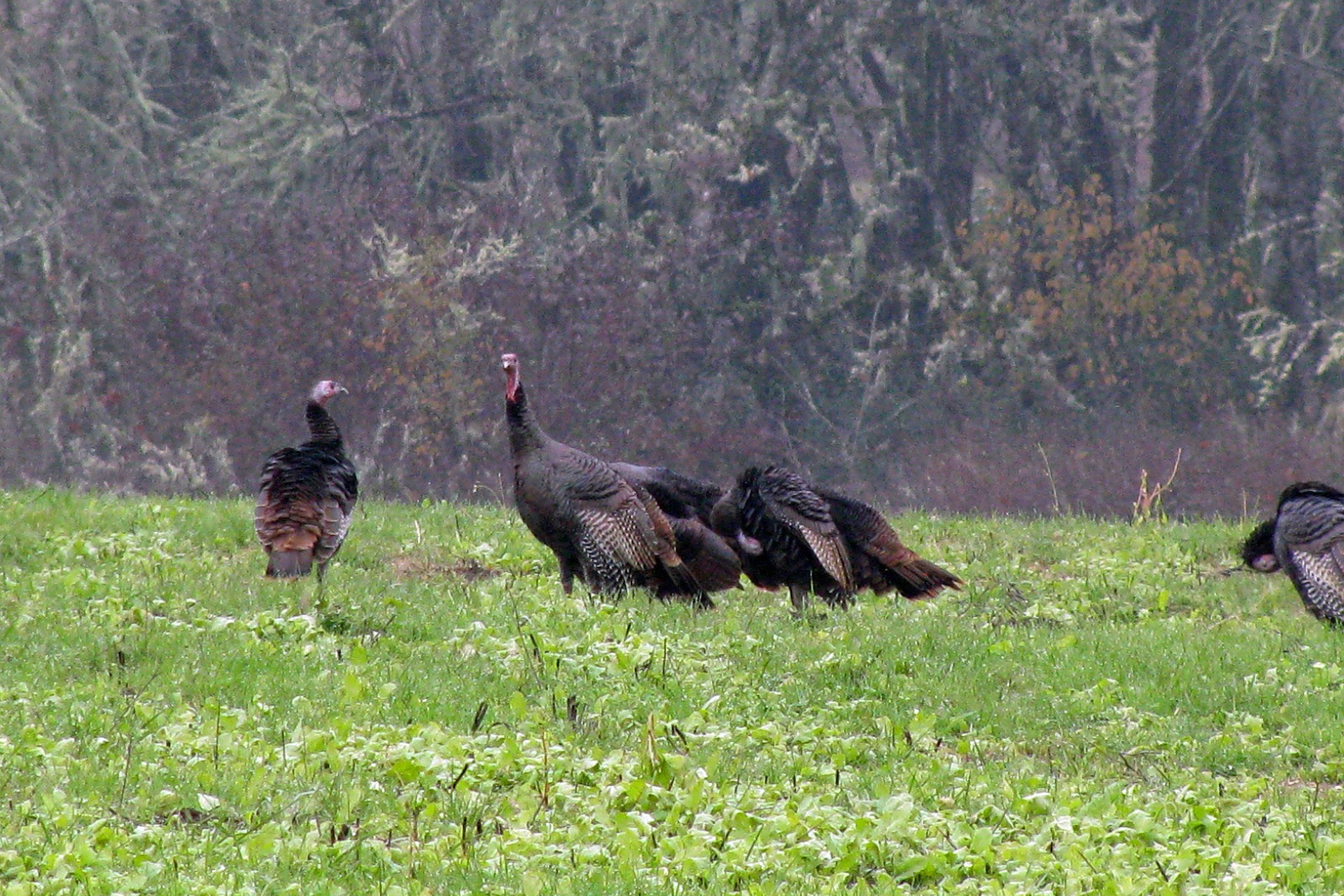Posted by CJ Davis on Jan 30, 2023
Managing Wild Turkey Habitat
By managing wild turkey habitat, landowners will improve the density and health of the population and ensure these incredible birds stick around for years to come.
Managing habitat for wild turkeys is a primary way you can ensure there’s a robust population to hunt in the future. Like anything else, turkeys need the right food, water, shelter, and safety to survive and thrive, and you can manipulate these conditions for the betterment of their well-being and your hunting pursuits. Let’s go over a few ways you can help the turkey population thrive in your neck of the woods.
Turkeys Like Their Options
Turkeys thrive in a diverse environment. An assortment of food and shelter sources will be critical to keeping turkeys around. A combination of grassy areas, timber such as a mixture of pines and mature hardwoods, and even food plots, are ideal to have on your property. Clean water is also necessary. This variety will reduce their home range, thus creating a home range for your local flock.
Cover is Key
Hens nest in low vegetation and weedy places near spring and summer food sources. While mature woodlands with well-developed understory are commonly sought out, it’s the grassy areas like powerlines, hayfields, and woodlot edges that are the popular nesting environments.
Often, hens will seek areas near logs, boulders, or other large objects to conceal themselves. Nesting cover should be close to brood habitat (which we’ll cover next) so poults can escape danger quickly. Planting native grasses is a primary way you can create this environment when managing wild turkey habitat. Disturbing the soil by mowing, disking, or burning pine cover also enables the soil to reproduce healthy vegetation.

Managing habitat for wild turkeys is a primary way you can ensure there’s a robust population to hunt in the future.
To avoid destroying nests and potentially killing the hen in a hayfield, delay mowing until you see poults on the ground, typically around mid July. Another good practice is to mow the perimeter of the field, or strips of the field, throughout the growing season. This provides shorter vegetation for poults to travel and feed in.
Forest Openings
A forest opening provides lush vegetation and palatable seed and insect life for broods (a family of young birds). These forest openings make great brood habitat because they can feed in these areas under dense shade from mature hardwoods, a critical factor for their well-being. While shade is important, allowing sunlight to penetrate to the forest floor in order to reach perennial plants, a vital food source, is essential. Forest openings can be created through timber management or soil disturbance by disking, mowing, or selective burning of small areas.
Timber Tactics
A mixture of hardwoods, pines, and mast-producing trees provide roosting environments, food, and cover. Selectively harvesting timber provides reproductive growth of thick vegetation, and planting new timber ensures turkeys have what they need to stick around for a while. When thinning a forest, keep in mind that trees left in full sun will be good seed producers, so prioritize accordingly.

By managing wild turkey habitat, landowners will improve the density and health of the population and ensure these incredible birds stick around for years to come.
The best timber for food and roosting are hardwoods such as oaks and hickory because they provide food throughout the winter and protection from predators. Soft mast-producing trees provide excellent fall and early winter food supply as well. Remove anything that can hinder the production of food from these trees, and anything beneath them that can hinder a turkey from consuming its edibles.
Prescribed Burning
Controlled burning of small areas on a rotational basis is the best way to create healthy vegetation and nourishing food in both field and forest habitat. Prescribed fires restore the soil and native plants and grasses, providing a flourishment of food and shelter for turkeys. Late winter or early spring is the best time to perform a burn for managing wild turkey habitat. Before conducting a prescribed fire, always contact your local foresters or wildlife department for expert oversight.
Killing Two Birds with a Food Plot
Turkeys benefit from plots planted with seed mixtures. Clover, chufa, buckwheat, millet, and peas are fantastic options for the flock. Food plots also attract insects - another vital food source.
As a bonus, allowing the food plot to grow up without mowing it can create additional vegetation for hiding and foraging. Like a hay field, cutting lanes through food plots helps birds easily access it and escape when needed.
Managing habitat is vital to the health of your wild turkey population. Other factors to consider are controlling invasive species and predators. While you can’t control every aspect of Mother Nature, you can at least give the turkey population a boost by implementing these tactics.